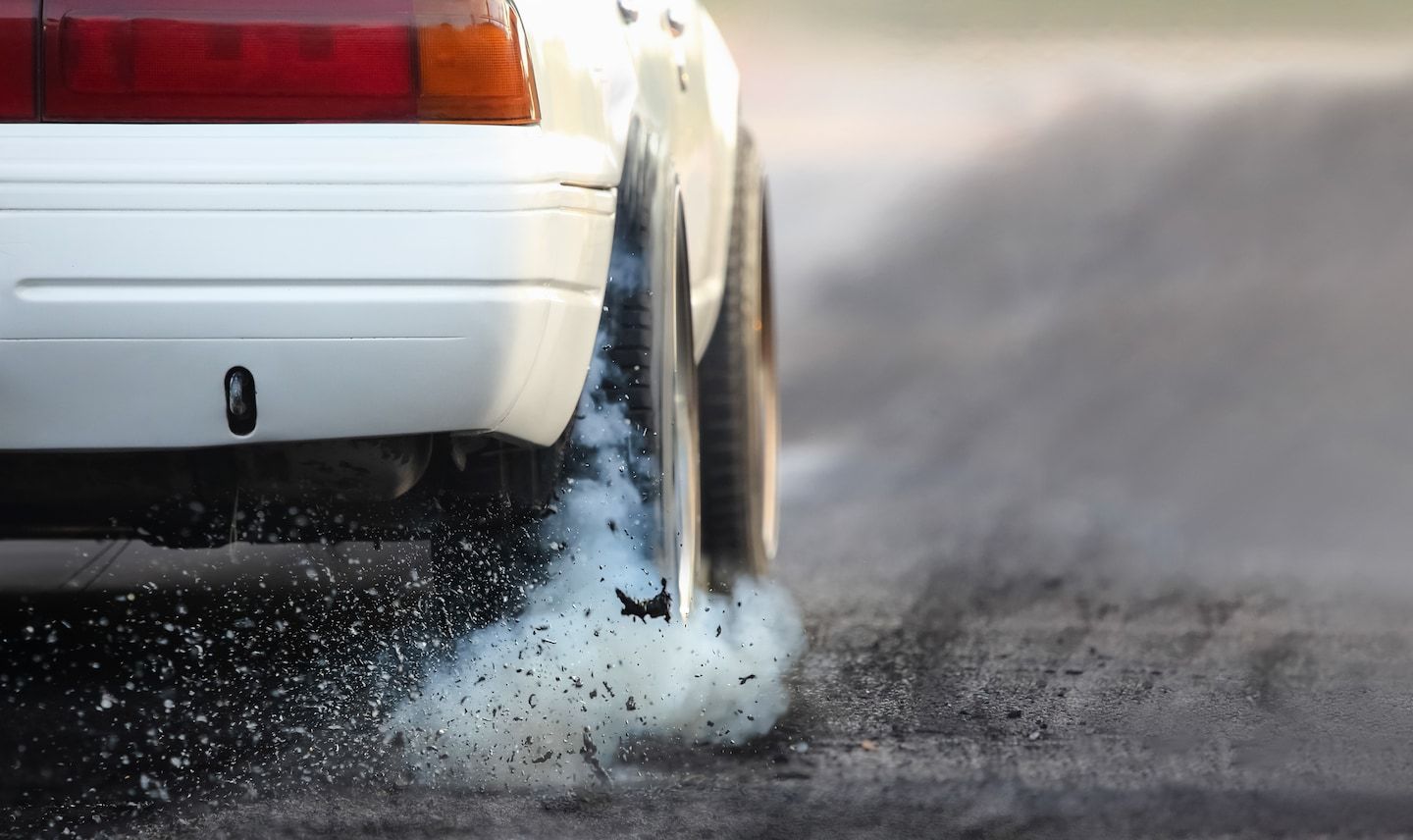Your car’s tires are swirling donuts of pollution
Listen 6 min Comment on this story Comment Gift Article Share
It’s time for a summer road trip for you, your car — and your tires and brakes. Recently, scientists are finding wear and tear on your tires and brakes are causing a worrying amount of particulate pollution, which may be a problem for the environment and your health.
For decades, scientists and health officials have warned drivers of the harmful pollutants coming from tailpipes. But as car exhaust systems have become cleaner, pollution linked to heart and lung disease has increased from a different source: tires and brakes.
In fact, wear and tear on tires and brakes have been shown to produce increasingly more particle pollution, by mass, than car exhaust systems did in several real-world and test scenarios. Some of the particles are large enough to see with our eyes. Others are fine particles (known as PM 2.5, with diameters up to 2.5 microns) and ultrafine particles (known as PM 0.1, with diameters of 100 nanometers), which can enter through our bloodstream and harm our organs.
Advertisement
Scientists say the issue will only grow worse as more cars, including heavier electric cars that put more strain on tires, are put on the road. Unlike car tailpipe emissions, brake and tire emissions are not regulated, which suggests the pollution may continue unchecked for the foreseeable future.
“These non-tailpipe emissions are becoming an issue for two reasons,” said Heejung Jung, a professor at the University of California, Riverside. “One, it hasn’t been regulated. Second, its chemical composition can be potentially more toxic, especially for brakes’ [particulate matter] … they’re all metallic.”
In California, sources other than tailpipes are the dominating source of traffic emissions. A lot of pollution comes from road dust, kicked up from cars driving along the road. In recent years, particulate emissions from brakes and tires are starting to grow as well, even outweighing those from tailpipes in some locations.
In one study, Jung and his colleagues looked at car emission sources along two highways in Long Beach and Anaheim in January and February 2020. In Anaheim, they found brake and tires constituted 30 percent of PM 2.5, whereas exhaust emissions linked to gasoline and diesel constituted 19 percent. In Long Beach, brake and tires constituted 15 percent of PM 2.5 pollution, which was the same as pollution from gas and diesel.
Advertisement
The team’s findings match with emission predictions by the California Air Resources Board, a state government agency that aims to reduce air pollution and that funded the emissions research. The agency predicted PM 2.5 pollution from brakes would be greater than exhaust pollution around 2020, given additional cars and cleaner exhaust policies.
But these emission patterns aren’t specific to California. Jung said tailpipe emissions have declined in all 50 states, a result of policies from the Environmental Protection Agency. But “in all 50 states, brake and tire emissions are not regulated, so we will see the same thing in other states.”
The pollution from your brakes and tires isn’t benign, either. Tests by Emissions Analytics, an engineering consulting company based in England, found tires produce about 2,000 times more particle pollution by mass than tailpipes. Although not regulated, those emissions exceed the legal particle limits for exhaust. The emissions also consisted of more than 400 compounds of different sizes and toxicity.
Advertisement
“Traditionally, it’s been assumed that it’s been big chunks of rubber breaking off tires and it’s just captured in the drains and it’s not a big problem,” said Nick Molden, founder and CEO of Emissions Analytics. “What we’ve shown from our testing is that it’s a mixture of bigger particles, but also ultrafine particles.”
Molden says they found particles as small as six nanometers, which can be inhaled. The tires also emit carcinogens. Other studies found metals. He said “water is likely to be the single biggest destinations of these particles” as materials get washed into drains from the road or seep through soil.
While it’s known that these chemicals and elements can have grave effects on humans, Molden said there’s a gap in knowledge of how many and at what concentrations these compounds end up in humans and animals. Research shows a particular chemical found in tires has been linked to declines in salmon in California, but that could just be the start. “It actually could be more in humans and animals than we thought. We just we don’t quite know yet,” he said.
Advertisement
That’s why it’s important to have a good car air filter as well, Molden said.
The issue will only become more pressing as heavier electric vehicles are introduced. Jung said large electric vehicles, due to their large batteries, are at least 50 percent heavier than an internal combustion engine-powered vehicle and will put more wear on tires and cause more pollution.
The solution isn’t to get rid of tires or electric cars, but perhaps shift the materials of the tires to natural or non-fossil fuel sources, the scientists said. For instance, many tires are made of synthetic rubber derived from crude oil, which includes carcinogens.
Some companies are experimenting with more sustainable tire sources, such as dandelions. The Goodyear Tire and Rubber Company last year announced a multimillion dollar project supported by the U.S. Department of Defense, Air Force Research Laboratory and a nonprofit, public-private partnership called BioMADE. The goal of the pilot project is to create tires for airplanes and other vehicles for use by the Air Force.
These dandelions aren’t ones you would find in your yard. This species, known as Taraxacum kok-saghyz, appear more scrubby above ground and have long roots. They are harvested from farmland in Ohio in partnership with Farmed Materials and can be harvested every six months, whereas rubber trees usually take seven years to produce the latex needed for rubber production, according to Goodyear.
Advertisement
The impetus for the project was an effort to be less reliant on natural rubber from overseas, said Melanie Tomczak, the chief technology officer at BioMADE. That would help protect against recent supply chain issues, which would also reduce greenhouse gas emissions. Tomczak added that an offshoot is that you could have secondary health benefits.
Some products, including shoes, are already made using dandelion rubber. Other companies have also developed dandelion tires. But it remains to be seen if dandelion tires can be scaled widely and make fiscal sense.
“It still has to make economic sense in the end to use the natural rubber,” Tomczak said. “This project will be a great feasibility study to show that whether that is possible.”
Gift this article Gift Article
Source: The Washington Post


